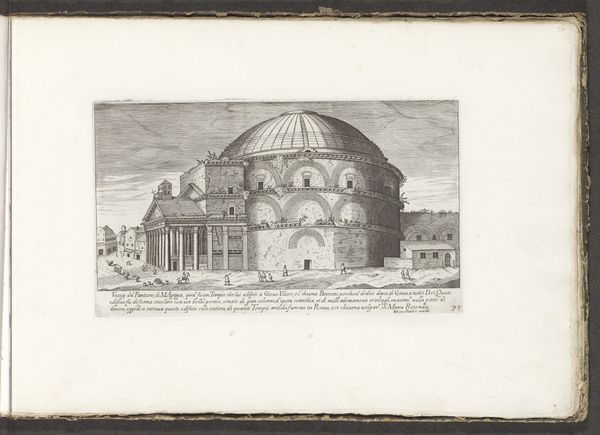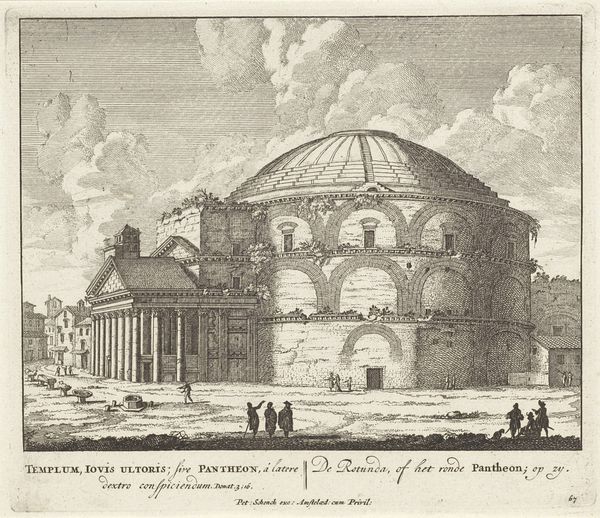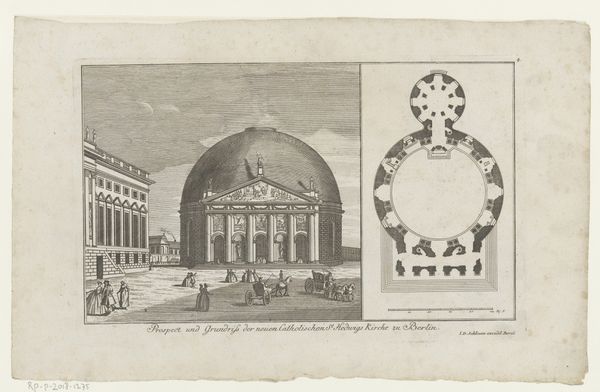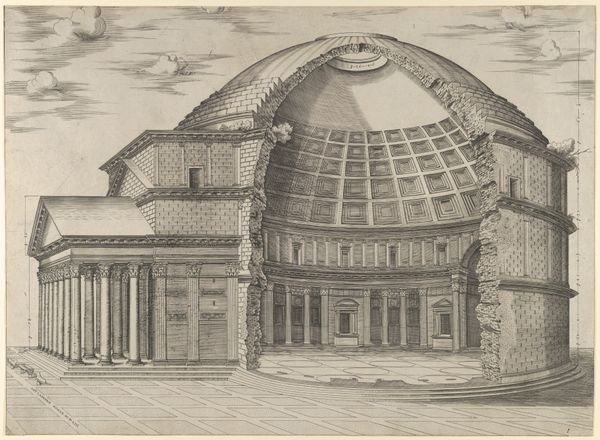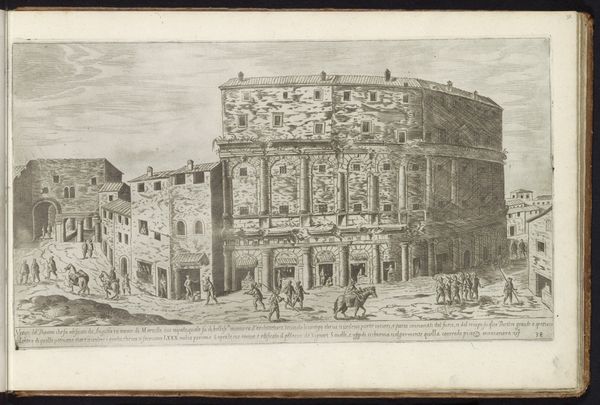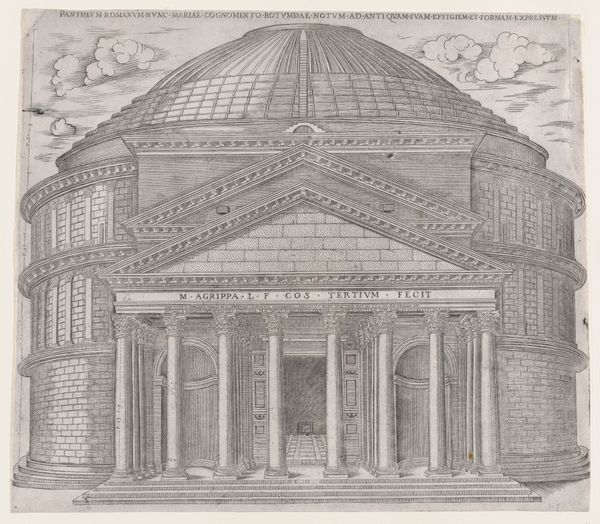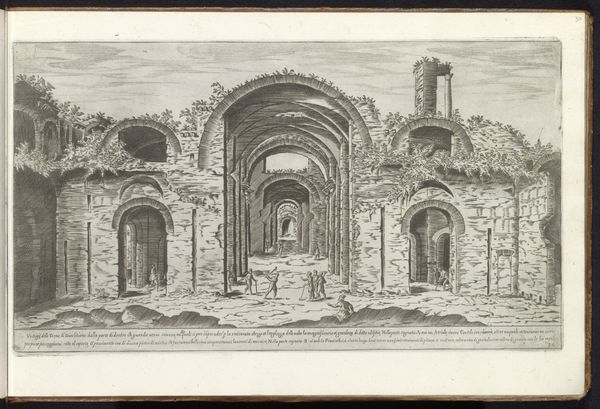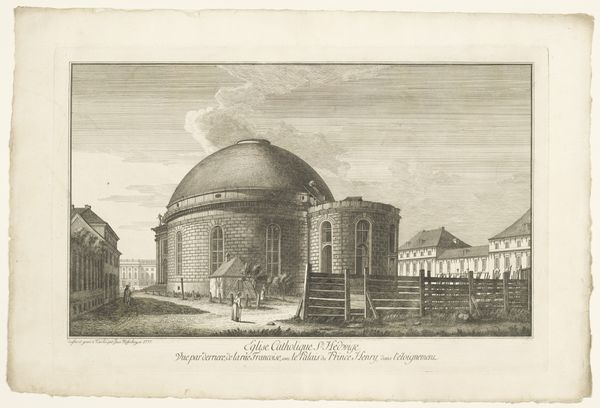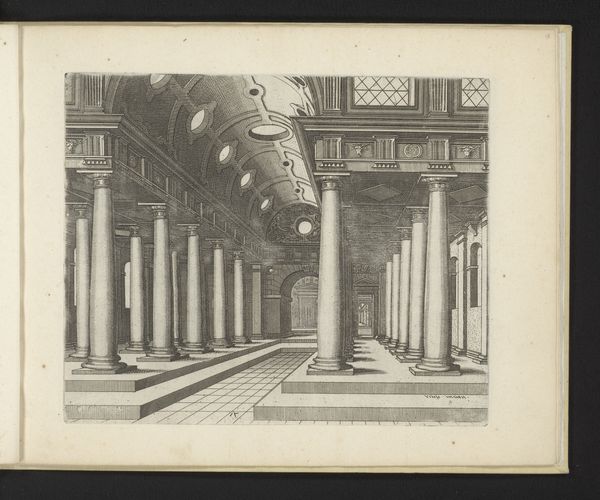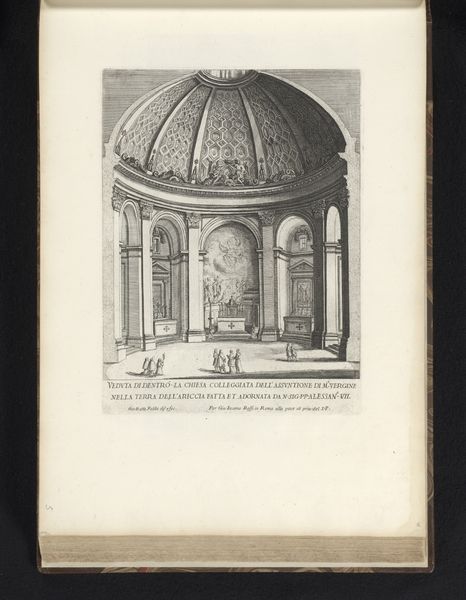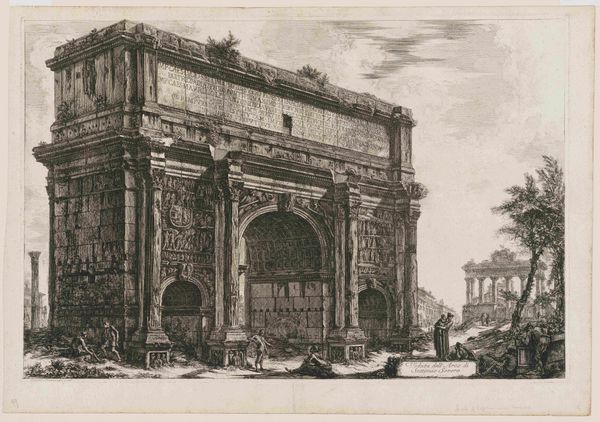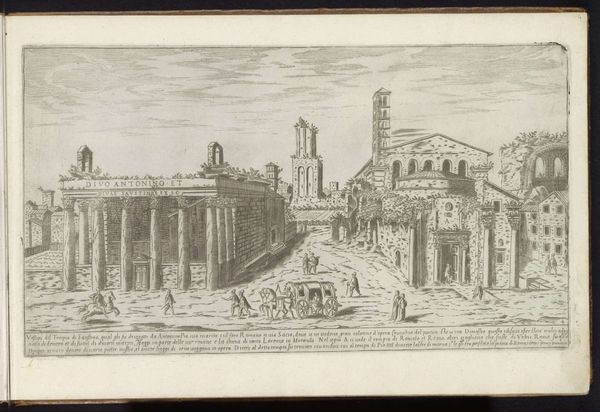
drawing, print, paper, ink, pen, engraving, architecture
#
drawing
#
aged paper
#
toned paper
#
mechanical pen drawing
# print
#
pen sketch
#
old engraving style
#
sketch book
#
perspective
#
paper
#
11_renaissance
#
personal sketchbook
#
ink
#
geometric
#
classicism
#
pen-ink sketch
#
pen work
#
sketchbook drawing
#
pen
#
cityscape
#
italian-renaissance
#
engraving
#
architecture
Dimensions: height 215 mm, width 381 mm
Copyright: Rijks Museum: Open Domain
Editor: This is "Pantheon te Rome" by Étienne Dupérac, dating back to 1575. It's a print made with pen, ink, and engraving on paper. The detail is incredible. The building is massive but in ruins. How do you interpret this work? Curator: This image speaks to the layered identities inherent within architecture. The Pantheon, initially a Roman temple, then a Christian church, existed within the Renaissance as a potent symbol, a signifier open to appropriation and reinterpretation. The etching emphasizes a partial ruin. It encourages us to ask: what are the politics of decay that Dupérac chooses to depict? Editor: That's fascinating. I hadn't considered the ruin as a deliberate choice. Does the fact that it's rendered with such precision, like a technical drawing, play into that at all? Curator: Absolutely. The style presents the Pantheon as an object to be dissected and understood. It attempts to control how the viewer relates to a past civilization through a supposedly objective lens, even if it is still subjective. The geometric lines become tools for examining—and, perhaps, subtly critiquing—power dynamics between past and present. The use of aged, toned paper reminds the viewer of its physical construction within an older system. Editor: So it's not just a straightforward depiction of a building, but a commentary on the layers of history and how we engage with them. Curator: Precisely. And think about accessibility: who would have had access to drawings like this and what knowledge would they bring? In this print, Dupérac reveals that our perceptions of the past are always mediated and filtered through the present. Editor: This makes me look at architectural renderings so differently now! Thanks for this critical framing. Curator: Likewise! It is insightful to think of how spaces evolve beyond their structural function and become active cultural symbols.
Comments
No comments
Be the first to comment and join the conversation on the ultimate creative platform.
